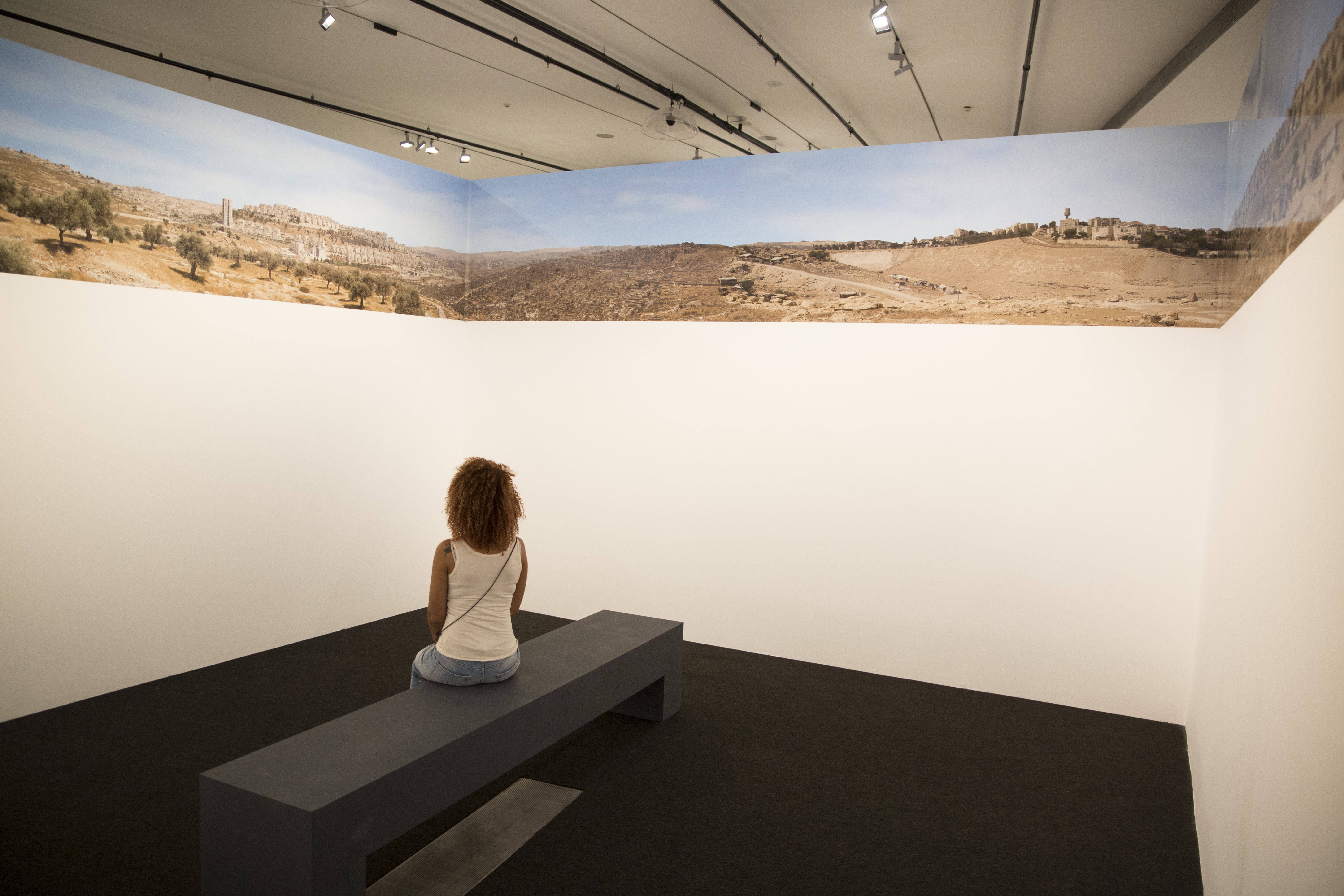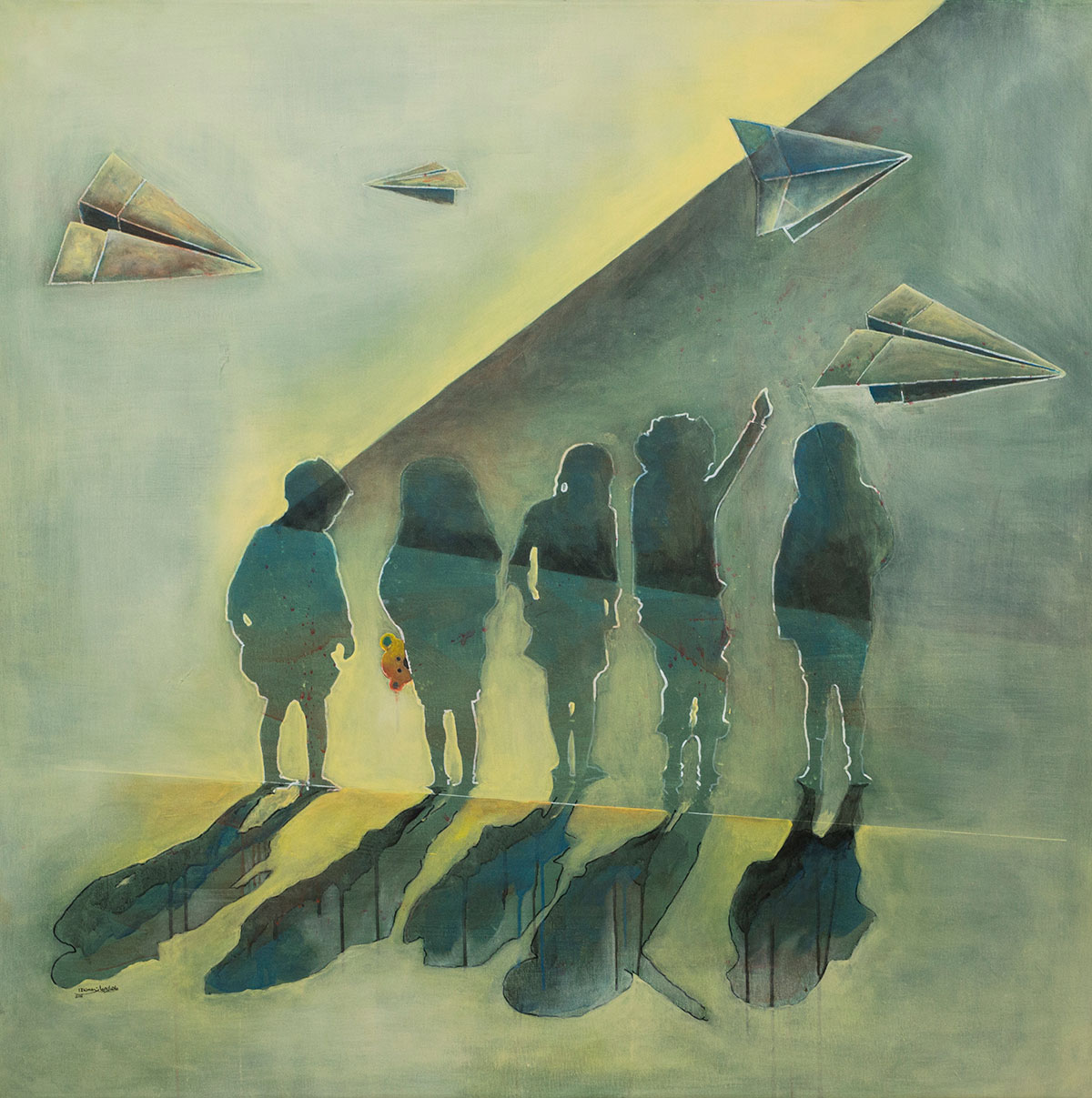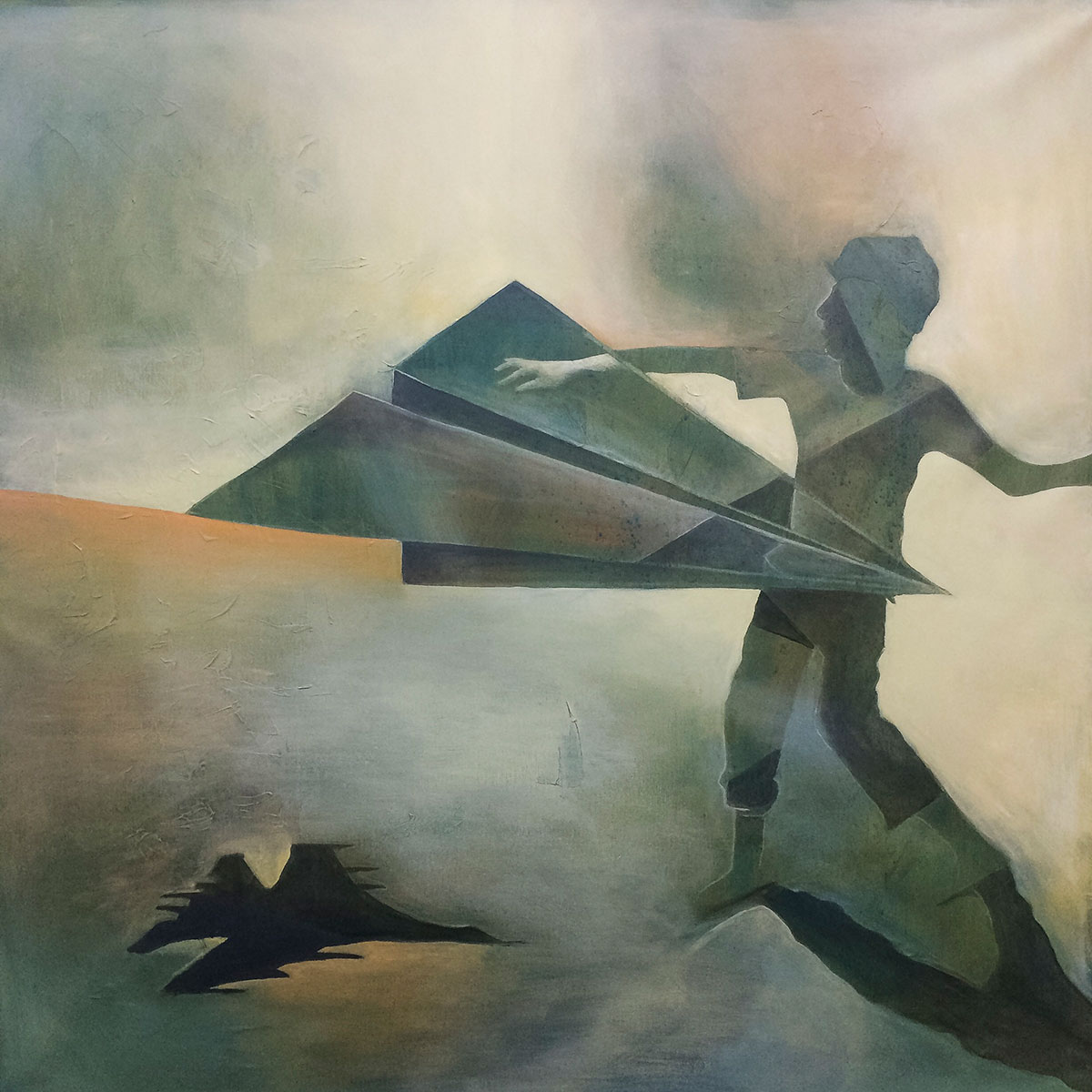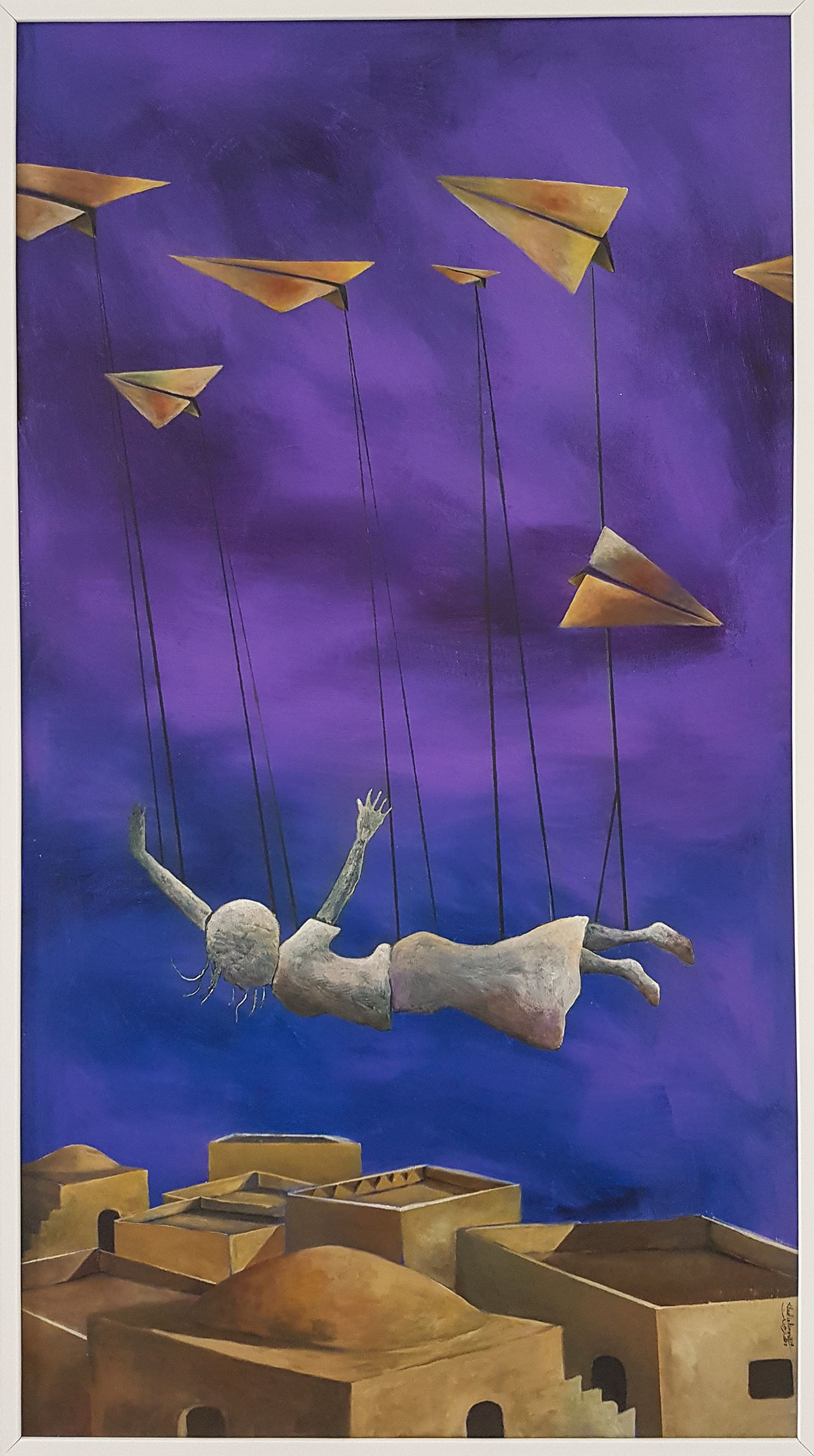“The streets were my teachers,” says Ahed Izhiman, recalling his early twenties, when he dabbled with danger until art shaped his path to become a visual artist. At an early age, Ahed began to explore photography, and in school he found inspiration with his quiet art teacher who managed to calm Ahed, typically a hyperactive and rebellious kid. Art lessons were a transformative experience in a school that felt oppressive. When Ahed was transferred to a school for kids at risk, he carried these impressions with him, and at age 15, he began to exhibit his photography works.
Following graduation, Ahed spent a few years working odd jobs. A rebel by nature, he lived through the second uprising grappling with the restrictions and limitations associated with being a Palestinian Jerusalemite. Photography centered him and led him to work with various aid organizations, covering their projects as a photographer. Through this work, Ahed developed a deeper understanding of his city, and Jerusalem gained increasing importance for him as an artist.
In 2003, Ahed moved to Florence, Italy, to study art history and Italian language. Inspired by the many artists he had met, he spent two years at Musrara College in Jerusalem upon his return. Also working as a volunteer, he taught painting and photography to youth in refugee camps, villages, and the Old City of Jerusalem. In 2007, Ahed established his own atelier and four years later founded the organization ArtLab in East Jerusalem, a shared artists’ space that also offers multimedia training to youth.
Growing up, Ahed was saddened by the increasing loss of land around Jerusalem and had to learn to live with the hope that one day settlement expansion would end. This duality is reflected in much of his work, and especially in the piece commissioned by the Palestinian Museum, The Ring, that portrays the city completely encircled and suffocated by illegal settlements. The work is on display at the Palestinian Museum for its inaugural exhibition Jerusalem Lives.
Having covered the stories of vulnerable children in the Hebron area for a project by UNICEF, Ahed’s images won a UNICEF regional award related to children’s rights. This experience furthermore inspired his recent work Paper Planes, a series in which Ahed explores how children view the innocent idea of a paper plane: Some connect it with the noise of army planes flying overhead, while others simply see it as an opportunity to play.
Since 2012, Ahed has been working on a visual project related to the Dead Sea, a place that offers him peace and inspiration. His research targets the landscape, water, environment, religion, and politics which he explores through a variety of mediums. The work is to be presented in 2018.





